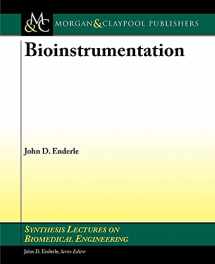
Bioinstrumentation (Synthesis Lectures on Biomedical Engineering, 6)
Book details
Summary
Description
This short book provides basic information about bioinstrumentation and electric circuit theory. Many biomedical instruments use a transducer or sensor to convert a signal created by the body into an electric signal. Our goal here is to develop expertise in electric circuit theory applied to bioinstrumentation. We begin with a description of variables used in circuit theory, charge, current, voltage, power and energy. Next, Kirchhoff's current and voltage laws are introduced, followed by resistance, simplifications of resistive circuits and voltage and current calculations. Circuit analysis techniques are then presented, followed by inductance and capacitance, and solutions of circuits using the differential equation method. Finally, the operational amplifier and time varying signals are introduced. This lecture is written for a student or researcher or engineer who has completed the first two years of an engineering program (i.e., 3 semesters of calculus and differential equations). A considerable effort has been made to develop the theory in a logical manner—developing special mathematical skills as needed. At the end of the short book is a wide selection of problems, ranging from simple to complex.


We would LOVE it if you could help us and other readers by reviewing the book
Book review



